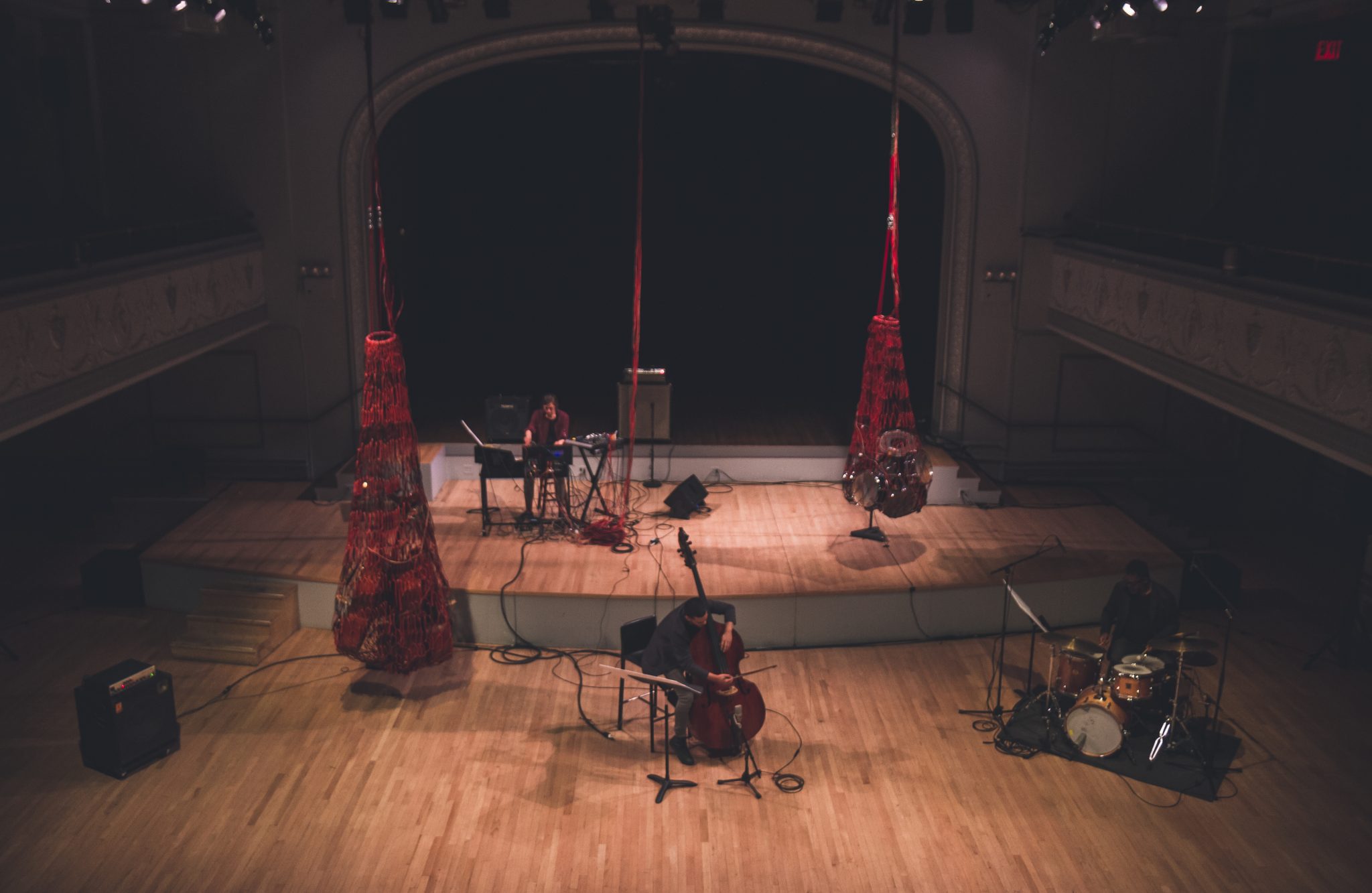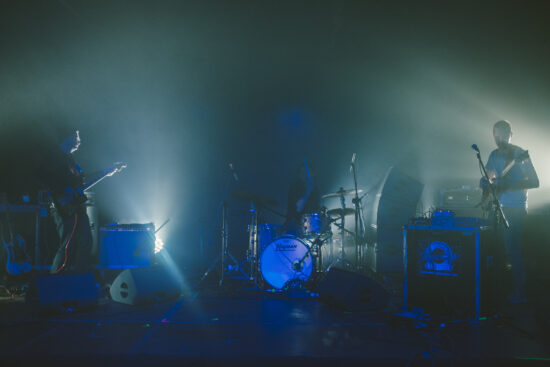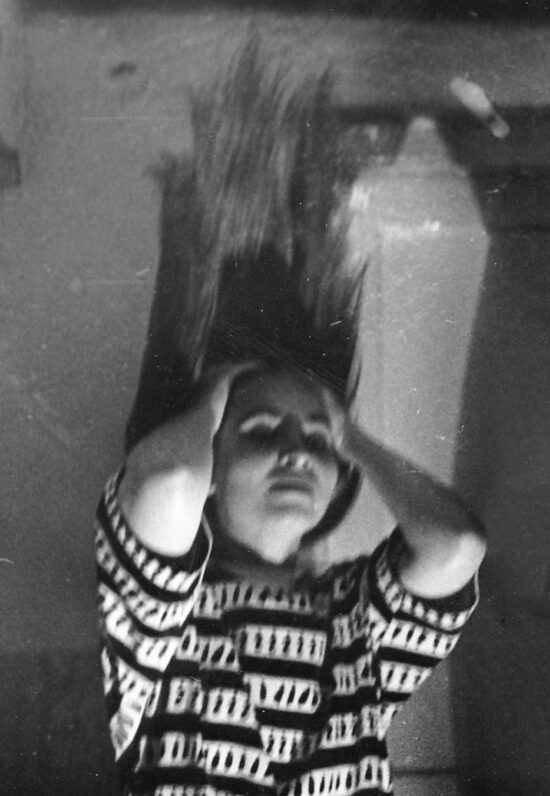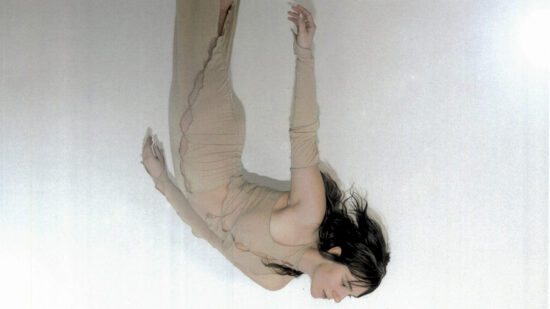Futuristic sounds, sound sculpture, songs for quartet, unobvious percussion performances or electronics played on the piano. Here are 9 albums on which jazz is theoretically the starting point, but which lead into original compositional areas.
Translation: Aleksandra Szkudłapska
BLED Roots & Futuristic Sci-Fi Sounds / Comet Sessions, Alpaka
New project of two-fifths of described below Chyła’s quintet, who are also the founders of Alpaka Records. The music is different from what they’ve done so far and quite unique in Poland, although it is easy to draw comparisons to both Sao Paulo Underground and Mikrokolektyw. The starting point is the sound of trumpet and drums, expanded by an arsenal of keyboards and a modular synthesizer. The result is a spacious, trance-like album, shrouded in electronic fog that draws you in and creates an oneiric soundscape. The whole has a subtle futuristic feel, which gradually envelops you both in the more stagnant fragments, when Miszk lets himself (and his trumpet) get carried away, and in the explorations of Koryzno’s modular synthesizer in the spirit of representatives of the British scene. An elaborate complement piece, truly highlighting Bled’s virtuosity, is the Comet Sessions cassette – more ambient and lengthy, though recorded during the same session. Featuring more abstract, longer and atmospheric pieces, it is a great follow-up, showcasing the full musical palette of the duo.
IRREVERSIBLE ENTANGLEMENTS Open the Gates, International Anthem
The Chicago quintet lays out new cards on each successive album. After their hard-hitting debut, Who Sent You was an expression of anger and frustration at the social situation in the United States. Compared to the above, “Open the Gates”, recorded in a single day in January this year, is a monumental release, and the tracks range from a few to even 20+ minutes. The opening title composition is a siesta in the Caribbean spirit. “Keys to Creation” features the band’s first ever synth sound, a dark and distinct Stewart/Holmes section groove with great stuff from Aquiles Navarro on trumpet, later joined by Keira Neuringer’s raging saxophone. The whole release, although rather on the long side, seems more coherent than its predecessors – less chaos here, more meticulously laid out threads, an open approach to composition, yet the musicians keep everything in check. There’s madness, too, and dense, unbridled excursions (“Storm Came Twice”), perfectly complemented by the lyrics recited or shouted by Camae Ayewa.
CECILIA LOPEZ, GERALD CLEAVER, BRANDON LOPEZ Red (DB), Relative Pitch
Red (DB), despite its intention as a site-specific performance, defends itself in the form of an album release. This meticulously woven form has the dimension of a monumental sound sculpture that shocks with its power, tension and carefully crafted sound. The video is worth seeing – apart from the three musicians, there is a monumental installation: a net with double basses and percussion, which is moved by Julia Cavagna according to graphical notations. The originator of all the commotion, Cecilia Lopez, builds a dense sound on the synthesizers, catching the reverberation produced by these structures. They are complemented by motifs played by Brandon Lopez on double bass and the sound of Gerald Cleaver’s drums. Successive layers add up, released slowly one after another – in the spirit of The Necks when it comes to form, in the style of Oneida from A List of Burning Mountains when it comes to darkness. The composition swells by the minute, the dramaturgy becomes more and more intense, it lasts longer, but also shows a great potential of symbiotic interweaving of acoustic instruments and electronics. The intriguing and absorbing material lasts 50 minutes, but there is no question of overdoing it.
LINDA FREDRIKSSON Juniper, We Jazz
Linda Fredriksson plays saxophone in bands such as Mopo and Superposition, but now, after years of work, presents her album Juniper. The album sounds very lyrical, even song-like, not just for jazz, but also for the We Jazz label. I check the press info, which describes the release as a “singer-songwriter album”, confirming my first impressions. However, we hear not only brass, but a whole range of instruments, other musicians, thanks to which the whole becomes colourful, sometimes poignant, but above all has a fairy-tale-like dramaturgy. Listening to “Neon Light [and the Sky Was Trans]” or “Nana Tepalle”, I have the impression that the emotions they contain describe today’s world, with all its blessings, but also the terrifying experiences that follow us every day. Fredriksson narrates without words and transcribes the songs arranged for guitar, keyboards and vocals to a full band. There is a balance between acoustic instruments and synthesizers, between minimalist and orchestral playing, grandeur and the personal dimension of the compositions.
TOMASZ CHYŁA QUINTET Da Vinci, Alpaka
Tomasz Chyła keeps moving forward and does not cease to amaze. Da Vinci, the next album after Eternal Entropy and Circlesongs, is the result of a new line-up, which boosts diversity: introducing Emil Miszk on trumpet and Krzysztof Hadrycha on electric guitar. The title indicates considerable scale. The opening, “A Constant Stream of Consciousness”, is shrouded in Penderecki’s darkness, “Macchina Violante” highlights the guitarist, who shines in the foreground, while “The Ritual” is a mystical turn with an unexpected appearance of a female choir. The musicians do their best and the harmonious section – Sławek Koryzno and Konrad Żołnierek – bravely keep everything in check, moving the whole thing forward. The refreshed line-up has brought new life, the musicians manoeuvre between rhythmic grooves, sonorism and progressive etudes emerging from the darkness. Sometimes the album becomes too baroque and there’s just too much of everything, but this can be put down to the constellation getting to know each other, leading the quintet into intriguing areas.
GRZEGORZ TARWID Ay, Kold
The short album Plays from a year ago went somewhat unnoticed. It’s a pity, because Grzegorz Tarwid is a real brainbox with a range of ideas so wide that the album format is sometimes unable to accommodate them. Ay is a good example here: from pop-inspired motifs, through lyrical melodies, minimalism, classical forms or electrified tracks, the final sound of which was supervised by Albert Karch. Tarwid admits that he wants to go beyond the comfort zone of the piano, to look as far and wide as possible. And he succeeds, too. It is often difficult to get rid of the impression that the musician is like a jukebox: whatever comes to his mind is served up in subsequent pieces. It’s worse when it comes to the cohesion of the material – the dynamics and stylistic dispersion is often so great that it’s hard to escape the impression of a collection of elements rather than a conceptually thought-out release. My favourite is “Nyege”, where Tarwid really shows how far one can go in terms of the unexpected treatment of his instrument in the production process.
EVAN PARKER Winns Win, Byrd Out
Evan Parker, one of the best known European representatives of free-jazz, has recorded an exceptional album, pulsating with power, but also with the performing strength of a virtuoso. On Winns Win he only uses the soprano saxophone, constructing his lyrical wails alone, locked in a room. The music refers to the architecture of William Morris, but also pays tribute to a long-time friend who passed away this year, the guitarist John Edwards. The point, however, is that this release is also eloquent out of context – the saxophonist plays his instrument with a carefully managed circularity of breath, able to sound minimalist when his booming and wailing phrases ring out. Parker has managed to make a statement that few can afford at this age and in general – he’s not hiding behind his instrument, but plays from the depths of his guts. When at the beginning the whole thing is covered by pulsating music shimmering with colours, in “WW6” we can hear his whirring, sonorous sounds and Parker tapping on the instrument, while “WW7” is already a spinning of motifs against the background of silence, as if the musician wanted to contrast the noise with which he attacked at the beginning. A moving, extremely emotional album.
KATHARINA ERNST le temps – a solo for drums and metal objects in five states, Trost
Whereas on her debut album Katharina Ernst steered her drum kit more than once in the technoid direction, on le temps she treats it in a more abstract way. The titles, basically the text in brackets, gives some idea of what the starting point is – elements of the drum kit, which the percussionist treats rather casually. “Ouverture” is a display on the hi-hat, recorded and produced as skilfully as if we were walking behind Ernst in the hall; “Vague” eschews a simple rhythmic framework, the short “Brise” catches the attention with its metallic sound, and “Flus” is a cacophony of shakers. Each song has a different feel and the drummer varies her ideas, so the album is succinct yet comprehensive; not as obvious as the debut at certain points. The designation is the title time, duration and states, which result in different compositions, case studies of percussion. The EP, lasting a little over 20 minutes, is an outline, sketches of ideas, but from the point of view of the timbre of sounds, playing with their resonance. It is a brilliant collection of explorations and sound patterns, another step in the artist’s journey.
AMIRTHA KIDAMBI & MATTEO LIBERATORE Neutral Love, Astral Editions
Amirtha Kidambi’s voice in Elder Ones or Mary Halvorson’s Code Girl functions as an instrument, but also carries a text, often socially involved. It looks different on recordings with Lea Bertucci, where the vocals are subjected to tape manipulation, and even more different in the duet with Matteo Liberatore, where Amirtha reveals her very sparse, economic side. Neutral Love is a journey into darkness, full of tension; it sounds as if taken out of a horror movie. The vocal-guitar duo reduces their means of expression; the artists sound as if something was restraining them and the sound was not able to fully resound. This creates a powerful tension, the sounds on the instrument are very sparse, as far from the rock ethos as possible. Contemplative strokes on strings are accompanied by swishes and whistles, between which the duo creates a story. There are moments of climax, louder moments, but this is above all clear proof that generating less sound can sometimes achieve a thrilling effect.




